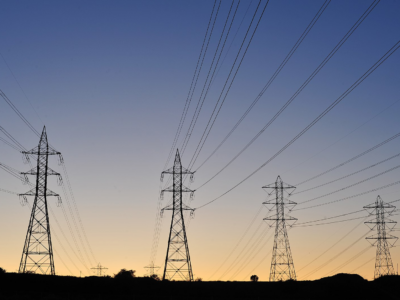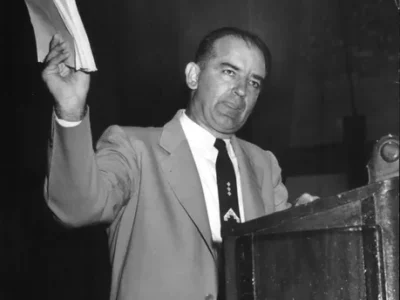How Would a Justice Kavanaugh Approach Environmental Cases?
Reflections From a Review of Kavanaugh’s D.C. Circuit Opinions
As we await the outcome of President Trump’s nomination of Judge Kavanaugh to the Supreme Court, journalists and legal scholars have been scouring Judge Kavanaugh’s past decisions and legal writings for indications as to how he might resolve pressing legal questions if installed on the Court. I’m adding here a few thoughts to the many that have already been expressed on this score (including my colleague Ann Carlson’s), with a specific focus on Judge Kavanaugh’s past decisions in environmental cases.
In reviewing the decisions, I was particularly curious to see when, if at all, arguments made by environmental advocates—I’m including governmental agencies arguing for tougher environmental standards in that group—had resonated with Judge Kavanaugh. While I was most interested in circumstances under which Judge Kavanaugh either ruled for an environmental NGO or in favor of EPA in the face of an industry challenge to an EPA rulemaking strengthening environmental protections, Kavanaugh-authored opinions disapproving of an EPA action or an environmental NGO’s argument were also instructive. A few key takeaways emerged as I read through the cases:
Environmental NGOs were most likely to be successful, in Kavanaugh’s view, when pointing out that EPA’s actions conflicted with or exceeded the scope of its statutory authority.
In Center for Biological Diversity v. EPA, 722 F.3d 401 (D.C. Cir. 2013), Kavanaugh concurred in the court’s opinion vacating EPA’s rule deferring regulation of biogenic carbon dioxide sources. EPA had postponed regulation of these sources by three years to undertake a detailed examination of the science of biogenic carbon dioxide emissions from stationary sources, exempting biogenic carbon dioxide sources from regulation under the PSD and Title V permitting programs in the meanwhile. EPA argued this “one-step-at-a-time” approach was justified because of the unique characteristics of these sources. The court disagreed, holding that because EPA had not explained what “full compliance” with the statute would look like, taking a “one-step-at-a-time” approach was arbitrary and capricious. Kavanaugh’s concurrence went a step further, agreeing with the environmental NGO petitioners that the Clean Air Act “does not give EPA the authority to distinguish a stationary source’s emissions of biogenic carbon dioxide from emissions of other forms of carbon dioxide” for the purposes of the PSD and Title V programs. In his concurrence, Judge Kavanaugh explained that past D.C. Circuit precedent in Coalition for Responsible Regulation, Inc. v. EPA, 684 F.3d 102 (D.C. Cir. 2012) established that the Clean Air Act requires PSD and Title V permits for major emitters of greenhouse gases, and accordingly, EPA lacked statutory discretion to exempt biogenic carbon dioxide sources from those programs. Kavanaugh’s concurrence here was particularly notable because it expressed his own personal reservations with the holding in Coalition for Responsible Regulation (“…as I see it, EPA’s decision to temporarily exempt biogenic carbon dioxide from regulation simply highlights the legal problems in applying the PSD program to greenhouse gases, including carbon dioxide, in the first place.”). Nonetheless, Kavanaugh applied the court’s precedent to side in favor of immediate regulation, declining to join with Judge Henderson, a Reagan appointee, who dissented and would have upheld EPA’s deferral of regulation.
In Natural Resources Defense Council v. EPA, 749 F.3d 1055 (D.C. Cir. 2014) NRDC challenged an EPA rule imposing emissions standards on the cement industry. The D.C. Circuit upheld the emissions-related provisions of the rule, but agreed with NRDC that EPA did not have the authority to create an affirmative defense for private civil suits when a violation of the standards occurred because of an “unavoidable” malfunction. Kavanaugh’s opinion explained that Section 304 of the Clean Air Act provides district courts with discretion to assess appropriate civil penalties for emissions violations. Because EPA’s proposed affirmative defense would have stripped the courts of the ability to determine whether penalties were appropriate under certain circumstances, the court found that EPA lacked authority under the Clean Air Act for that portion of the rulemaking.
Where Kavanaugh determined EPA was acting within the scope of the authority delegated to it from Congress, some of his opinions showed a willingness to accept agency decisionmaking rationale, even in the face of industry challenges.
In American Trucking Associations, Inc. v. EPA, 600 F.3d 624 (D.C. Cir. 2010), an industry group challenged a California rule regulating emissions from transportation refrigeration units in trucks. The D.C. Circuit upheld EPA’s decision to authorize the rule. Kavanaugh’s opinion explained that California holds “the primary role in setting limits on emissions from in-use non-road engines” under the Clean Air Act, and that EPA serves in a very limited role, reviewing California’s actions “under a narrowly defined set of statutory criteria.” The court found EPA’s approval of the rule was reasonable in light of its statutory role.
In National Association of Manufacturers v. EPA, 750 F.3d 921 (D.C. Cir. 2014), Kavanaugh authored an opinion upholding EPA’s rule tightening the national ambient air quality standards (NAAQS) for fine particulate matter. Industry groups had challenged the more restrictive NAAQS, arguing that the standards themselves were unreasonable, that EPA had unreasonably eliminated a provision allowing certain areas to demonstrate compliance based on averaged results from multiple monitoring sites, and that EPA had also unreasonably amended monitoring network provisions to require installation of additional monitors near heavily trafficked roads. The court disagreed, and Kavanaugh’s opinion noted that the statutory scheme “grants EPA substantial discretion,” which it had exercised in a reasonable fashion by providing “reasoned explanations” for its approaches and decisions.
That being said, Judge Kavanaugh appeared more willing to accept agency decisions under circumstances where EPA was acting pursuant to what he viewed as longstanding and narrowly-interpreted authority. In the context of more novel regulatory efforts—like climate change regulations, as discussed below—Kavanaugh was more likely to determine that in his view, the purpose and intent of the statute did not warrant deference to EPA’s interpretation. In other words, Judge Kavanaugh’s process for determining whether deference is warranted appears to be more dependent on the underlying nature of the regulation at issue than upon a consistent principle for determining statutory ambiguity.
Kavanaugh’s opinions evidence a tendency, which others have noted, to read grants of statutory authority narrowly.
This seems likely to present a challenge for advocates of climate change regulation. Kavanaugh’s recent decision in Mexichem Fluor, Inc. v. Environmental Protection Agency, 866 F.3d 451 (D.C. Cir. 2017) (petition for cert. pending) provides a snapshot of the kind of rationale we’d be likely to see from a Justice Kavanaugh on this score.
Mexichem Fluor was an industry challenge to a 2015 EPA rulemaking that moved hydrofluorocarbons (HFCs) from a list of permitted substitute substances for ozone-depleting chemicals under Title VI of the Clean Air Act onto a list of prohibited substances, and would have required manufacturers to cease the use of HFCs in their products. Manufacturers of HFC-containing products challenged the rule, arguing that Section 612 of the Clean Air Act only grants EPA authority to require the replacement of ozone-depleting substances with substitutes, and that HFCs were safe substitutes at the time that the manufacturers replaced ozone-depleting substances in their products with HFCs. Because HFCs are not themselves ozone-depleting substances, said the manufacturers, EPA did not have authority under Section 612 to make them stop using HFCs and replace them with still another substitute.
In a Kavanaugh-authored opinion, the D.C. Circuit agreed. Kavanaugh’s opinion pointed to circumstances under which application of the rule would still be valid—for example, a manufacturer that still uses ozone-depleting substances could not now replace them with HFCs—and suggested that EPA has statutory authority to regulate HFCs through other channels, like the Toxic Substances Control Act, but held that EPA lacked authority under Section 612 to require the replacement of HFCs with other substances. The rule was remanded to the agency to allow EPA an opportunity to articulate an argument that Section 612 provides authority for EPA to “retroactively disapprove” replacement of an ozone-depleting substance with a substitute that is later determined to be harmful.
In vacating the replacement requirements of the rule and remanding it to EPA, the opinion clearly articulated Kavanaugh’s philosophy on judicial review of climate change regulation:
“Congress has not yet enacted general climate change legislation. Although we understand and respect EPA’s overarching effort to fill that legislative void and regulate HFCs, EPA may act only as authorized by Congress. Here, EPA has tried to jam a square peg (regulating non-ozone-depleting substances that may contribute to climate change) into a round hole (the existing statutory landscape).”
Citing the recent Supreme Court decision in Utility Air Regulatory Group v. EPA, Kavanaugh’s opinion went on to articulate two “lessons learned” with respect to EPA’s regulatory efforts to address climate change:
“First, EPA’s well-intentioned policy objectives with respect to climate change do not on their own authorize the agency to regulate. The agency must have statutory authority for the regulations it wants to issue. Second, Congress’s failure to enact general climate change legislation does not license an agency to take matters into its own hands, even to solve a pressing policy issue such as climate change.”
To find that the existing statutory landscape was “a round hole,” Kavanaugh’s opinion focused closely on the definition of “replace,” referring to the dictionary to assert that a “replacement” can only occur one time (in this case, when the original ozone-depleting substance in a product was replaced with HFCs). This approach ignored arguments that the term “replace” can have different meanings in different contexts, including referring to an ongoing process of substitution for a prior defect as opposed to a single substitution at one point in time. Kavanaugh’s opinion thus declined to address this ambiguity in the meaning of the term or to analyze EPA’s interpretation within the Chevron framework that applies when statutory ambiguity is detected. This approach was consistent with a larger trend in the cases: Judge Kavanaugh’s tendency to find statutory language unambiguous—and unambiguously contrary to agency interpretation—when novel regulations are in play.
For now, at least, comprehensive climate change legislation is unlikely to materialize in the near-term, and Kavanaugh’s opinions on this subject suggest that a Justice Kavanaugh would not be supportive of more creative attempts by EPA to read regulatory authority into existing statutory language. However, as discussed above, Kavanaugh has previously deferred to his own circuit’s precedent that EPA must regulate greenhouse gas emissions under the PSD and Title V programs, despite articulating personal reservations on that score. An optimist can hope that a Justice Kavanaugh would similarly adhere to Supreme Court precedent in Massachusetts v. EPA, rather than revisiting or constraining that decision, and that he would accordingly recognize at least some EPA authority to regulate greenhouse gas emissions.
Although Judge Kavanaugh’s strict read of statutory authority seems to indicate that, were a future presidential administration inclined to endorse wide-reaching climate change regulations, a Justice Kavanaugh would view such efforts with skepticism, Kavanaugh’s opinions also contain language and observations that may be helpful to those combating the regressive efforts of the present administration.
For example, environmental advocates concerned about EPA’s recent regulatory push to roll back fuel economy and greenhouse gas emissions standards and revoke California’s waiver to adopt its own greenhouse gas emissions standards may find useful language within Kavanaugh’s own past decisions if a challenge to the rule ever finds itself before the Supreme Court (my colleagues, Ann Carlson and Meredith Hankins, have each presented in-depth analyses of the regulatory action and its many legal weaknesses).
As discussed above, Kavanaugh authored the opinion in American Trucking Associations, upholding California’s rule limiting emissions from diesel-powered transportation refrigeration units. There, Kavanaugh’s opinion rejected an industry argument that California’s rule created a “de facto national rule because many trucks pass through California and will be subject to the rule.” Calling that argument “weak,” the opinion noted that other states were not required to adopt the rule, and found “nothing about this approach to be inconsistent with the federal statutory scheme.” The “de facto national rule” argument is one that has come up again—even raised by former EPA Administrator Scott Pruitt—with respect to California’s waiver, and is similarly “weak” in that context.
And Kavanaugh has cleaved to the Supreme Court’s holding in FCC v. Fox Television Stations, Inc., 556 U.S. 502 (2009) that an agency must justify a change its interpretation of a statute, including providing a clear explanation of the basis for that change. See Mexichem Fluor, 866 F.3d at 461-462 (also noting that “to the extent that EPA’s prior approach had ‘engendered serious reliance interests,’ EPA would need to provide a ‘more detailed justification’ for its change.”). As EPA now seeks to backtrack on well-reasoned analysis supporting the Obama-era standards, the agency will need to explain the about-face, and expert analysis has already outlined the many reasons the current administration’s rationale does not hold up.
In sum, a constant theme throughout Kavanaugh’s opinions was a strong adherence to his own particular vision of separation of powers doctrine. Judge Kavanaugh’s insistence on clear statutory authority for agency regulation suggests that environmental advocates are most likely to be effective before a Justice Kavanaugh when focusing on agency overstep or conflict with existing statutory authority. Challenges to Trump Administration rulemakings may present unique opportunities for environmental advocates to focus on these kinds of arguments. But in a world where comprehensive climate change legislation appears to be a long way off, a Justice Kavanaugh would likely present a hurdle to future agency attempts to regulate climate change within the existing statutory framework.
Reader Comments
One Reply to “How Would a Justice Kavanaugh Approach Environmental Cases?”
Comments are closed.







Ms Julia Stein said;
“……Judge Kavanaugh’s insistence on clear statutory authority for agency regulation suggests that environmental advocates are most likely to be effective before a Justice Kavanaugh when focusing on agency overstep or conflict with existing statutory authority. Challenges to Trump Administration rulemakings may present unique opportunities for environmental advocates to focus on these kinds of arguments….”
Dear Ms Stein,
Thanks for your excellent and helpful analysis of Judge Kavanaugh’s approach to environmental regulations. Your commentary offers a dose of badly-needed sound and objective reasoning here on Legal Planet, and serves as a gracious, though tacit, scholarly endorsement of this good Judge.
Have a good day,
bqrq